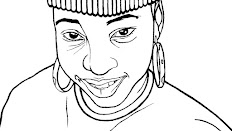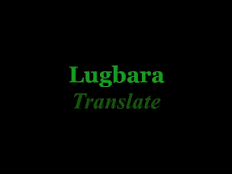On Tuesday 30th June 2009 at the Uganda National Museum opposite Seascallop Restaurant on Kira Road, the Makerere University Faculty of Technology Department of Architecture launched the website (www.tech.mak.ac.ug/heritage) documenting and illuminating the surviving historic built heritage of Uganda. The Mission of the Website is: To create awareness about surviving built heritage resources of Uganda so as to impact the local preservation arena with a research, publishing and archiving culture as a powerful tool for conservation action. The website features religious bodies, primary plus tertiary institutions, culture functions, health services, residences and public art. As referred to in the 1972 UNESCO Convention for Conservation and Protection of the World Natural and Cultural Heritage, it includes works of monumental sculpture, painting and other monuments, elements or structures of archaeological nature, inscriptions, cave dwellings and combinations of features, groups of buildings: groups of separate or connected buildings which because of their architecture, their homogeneity or their place in the landscape are outstanding historically, artistically or scientifically. Also included are residential precincts, business premises, sites, parks and gardens and or mixed use facilities.
Many interesting ideas were shared during the workshop. I came in very late and couldn’t place names to the various contributors but here are a few of the ideas:
“Without architectural acumen, you may create a lame building, or a deaf one. Create things like you for the future generations! Beautiful buildings attract tourists. Souvenirs of buildings for example T-Shirts of Namirembe Cathedral when sold can be bought and earn money.”
“There is a problem in Uganda as a result of the education system; people do not appreciate culture. Some politicians speak bad about other regions. There is no spirit of cooperation. We have our own innovations but do not believe in ourselves. Some MUK professors reject bibliographies that include work by professors like Justice George Wilson Kanyeihamba (Chancellor of KIU – Kampala International University) from our own country. In our Primary Schools, if you speak vernacular, you are caned. The issue of culture should be brought up at the primary level. When rebels wage wars, they shouldn’t destroy the existing landmarks.
“(In some European countries, they pray for maximum destruction during war so that they can start the first development program.) For architecture, whenever you look at a building, there is a signal in your brain. Someone once asked: ‘Why zone floors, here don’t go beyond three floors?’ Let us appreciate the dwarf, the tall, the Karimojong.”
“Forces of globalization (colonialism) have destroyed indigenous values where people would sit down and listen to their grandparents. These were negative trends brought before we were born, it’s now up to us to change that. Nevertheless, English helps us understand further, higher, deeper and larger. We do not have to abandon vernacular.”
“Students fail simple exams set at the Faculty of Technology because they never understand the fundamentals or abstracts which can be taught best using vernacular. Uganda teaches sciences in English but if you draw a line from Nimule, in Southern Sudan or New Sudan, to the North Pole you will find that all teach in their local languages.”
“If you want to know the future, you must glorify the present. This project has come to fill the vacuum. The grant from the U.S. Ambassador’s Fund for Cultural Preservation will surely ignite Ugandans.”
Nelson Abiti aka Nelly, one of the Uganda Museum facilitators at the workshop emphasized to me after the proceedings that, “Colonial evangelists taught us how our traditional cultures were of the Devil, yet when someone takes very good care of a certain tree in his homestead, he is actually honouring GOD who made the tree.”
GODisgreat! Welcome to my Atelier [Design Gallery]! Contact Edward via +256-781-345712; awa'difo! From Busoga to Buganda to Lugbaraland and beyond, Art is my life. #JESUSistheWay...
JESUS Christ Quotes

JESUS is the Way...
The Y-Corner (411)

Either you go left or go right...
Self Portrait

An inking of myself in Twenty23...
Maracha View

Rock my world...
Elekitoro Komisoni Ongu [EC Race] 2021
![Elekitoro Komisoni Ongu [EC Race] 2021](https://blogger.googleusercontent.com/img/b/R29vZ2xl/AVvXsEjAo2xbJR5ARnWe_U1As57tS-D9aSdj6KR1hY01W8yFB1zNRGcVVQy9lDHv6mZFOBYCWrohl9bjA538bXyUrERcUNs9HVPvuR1_-jXCuI-npTMsKM4SxPul3mEZG8NDky0RotfGX5XqawQ/)
Ma Prezidenti ni ini, te eri ma basi woro yelo [Lugbara Translate: My President is black, but his bus is all yellow]...
Peace & Prudence (2016 Logo Revamp)

Drew this Council Emblem in anticipation of Arua's transition from municipality to city which happened four years later; it was emblazoned on the West face of the 2021 Arua Central Market...
Tumusiime Family (Portrait)

When you want Ugatoons for your loved ones, just reach out to Mr. Aiko (+256-781-345712)...
Time Shield

Mashup summary of lessons learnt from Agriculture, Architecture and Art. There is nothing under the sun that cannot be discussed in 100 words...
Xnthi

This beauty inspired me to restudy my mother tongue becoz I couldn't believe the infinitely-sweet fluency with which she spoke it during her preteens (6-11 years old)...
Synthetic Artificial Lugbara Translation

Ojapi: Transcribe, translate, chat (+256-781-345712)...
Filipino (2020 Portrait)

The colour mix is truly lovely...
Engato Store (2020 Logo Design)

I made this logo for (my 2nd cousin) Edwin Paratra's shoe-selling hustle...
Elita + Onya (2021 Portrait)

A couple residing in Lusaka, Zambia...
Nda azini Isu
Ojapi

Where the Old and New meet...
Aiko TV

Designs & Portraits...
Most Viewed Posts
-
The Motion for URA’s inaugural Open Minds’ Forum at Hotel Africana’s Nile Conference Hall in January 2008 was: “It is the Sole Responsibilit...
-
‘DO you own a small or medium business’? That could mean less or just more than 5 employees. If yes, then you should have attended the three...
-
(Eric [in a skyblue shirt] chats with a lady) BEWITCHINGLY RYTHMIC ASKED why his Art pieces focus mainly on women, he replied that he wa...
-
Ugatoons One of the Most Complicated and Painstaking Visual Arts is 3D Animation, a Twin Sister to CGI used in Movies. Before the Turn of t...
-
Uganda is blessed with many inspired Church designs from East to West, North to South eg St. Andrew's Church of Uganda Jinja, St. Andrew...
-
She Wore A Green Attire (SWAGA) by Aiko... GOD is great, first and foremost! In Chinese language (Putonghua), a Cartoon is called "Manh...
-
James Nyakuni, one of the richest people in Uganda, is known for the fleet of white GaaGaa buses that ply the Kampala - West Nile route. He ...
-
I spent the first Decade of my Life (January 1984 to May 1995) mainly in Jinja and got to hear about a lucky Lady from around there who went...
-
The first week of October 2008 was awash with fresh news that homosexuality is contaminating a few born again churches in Uganda. Whether th...




